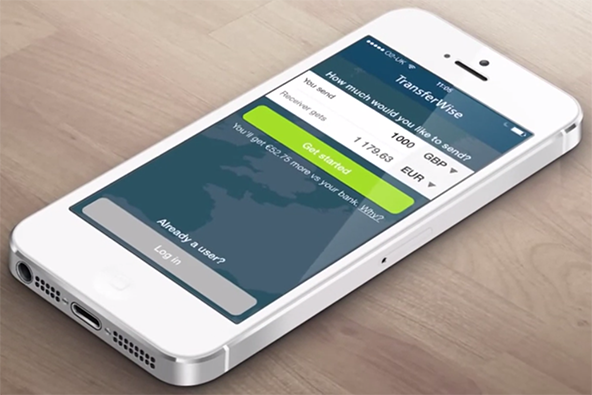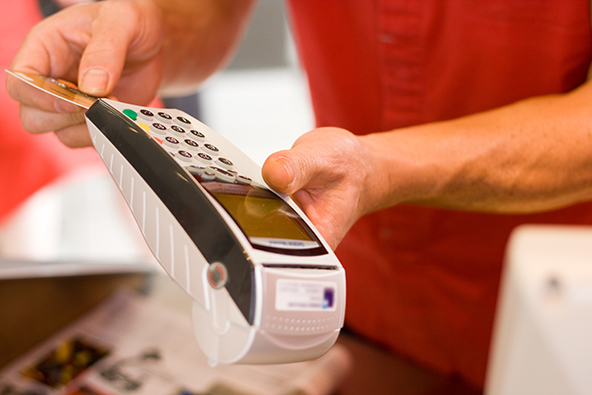TransferWise and the Challenge of Cheap International Money Transfers

TransferWise — a London-based start-up, which facilitates cheap international money transfers — has grown substantially since we first wrote about it back in February of this year. The company, which was co-founded by the first employee of Skype — the ubiquitous voice over IP service — tells us that it has now surpassed ?ú250 million ($338 million) in total transfers since it opened for business in 2011, claiming to have saved ?ú10 million ($16 million) in fees for its customers in the process. For perspective, through December 2012, that total was only ?ú50 million ($80 million).
So people clearly like the service, and for a very good reason — it’s much cheaper than the mainstream alternatives. In an international bank transfer, the sender is charged a fixed fee and then the banks add a currency conversion fee of 3 – 6 percent of the transaction amount. In contrast, TransferWise’s fee is only 0.5 percent, which makes one wonder whether the company is profitable. Indeed, the question is whether such an operation can be profitable. Such a margin could just be sufficient if TransferWise were able to circumvent the currency conversion market altogether. However, in the real world, that just can’t be done. Let me explain.
How TransferWise Lowers Money Transfer Fees
Let’s begin by reviewing how TransferWise is able to charge its customers less than the competition. Here is how the company itself explains it:
All exchanges on TransferWise are done using what we call the real rate. This is the mid-market rate (sometimes also called the interbank rate or spot rate) used in global financial markets.
The mid-market rate is the rate that is between the BUY and SELL rates you usually see, it is the rate that is used in the global financial markets. Most banks and brokers hide this from you by marking it up significantly – to their own benefit. We apply the mid-market rate at the time of matching, i.e. after we have received your deposit and activated the payment for conversion.
The rates used in TransferWise are aggregated from a number of markets and updated regularly through the day. You can check against finance.yahoo.com, xe.com or oanda.com to confirm that the rate used on TransferWise is close to the current market rate.
The company charges a flat fee of ?ú1 or ?é¼1 for transfers of up to 200 GBP / EUR and 0.5 percent of the transaction amount for larger payments. Taavet Hinrikus, the aforementioned former Skype executive who co-founded TransferWise, brags about his company’s low rates in an interview with GigaOm’s David Meyer:
One typical use case we have is people who are providing services internationally — if they’re renting a villa in Greece to people in the U.K., for example… PayPal charges a hell of a lot for foreign exchange — between 3-4 percent, which I would call daylight robbery. TransferWise charges 0.5 percent.
That’s all great, but how is TransferWise itself able to avoid paying currency conversion fees? Well, here is where things get really interesting.
Is Getting Around the Banks Really an Option?
TransferWise can keep its pricing structure and maintain profitability for only as long as it is able to cut off the banks from the currency conversion process. In theory at least, this is perfectly possible. If, for example, someone in Britain wanted to send ?ú1,000 to a relative in India, she would deposit the money into TransferWise’s British account. The company would then identify someone in India who wanted to send the same amount in the opposite direction and who would therefore deposit the rupee equivalent of ?ú1,000 into TransferWise’s Indian account. In that case, no money needs to cross borders: the British recipient is paid out of TransferWise’s British account and the Indian recipient is paid out of the company’s Indian account. So no currency conversion fee is ever incurred.
However, you can immediately see the problem in such a scheme: it can only work in the manner described above for as long as there is a balance in the flow of money between each pair of countries served by the service provider. The problem is that in the real world such a balance does not exist. In the above example, the flow of person-to-person transfers of British pounds to India outstrips the flow of Indian rupees in the opposite direction. So, whereas there will be more than enough pounds in TransferWise’s British account to pay the recipients in that country, there will be shortage of rupees in the company’s Indian account. And when that happens, the company will have to turn to the market to purchase the needed rupees, and pay the associated currency conversion fees.
The Takeaway
TransferWise’s only selling point is the low cost of its service. If it weren’t for that, people would just keep using PayPal, Western Union or wire transfers — though costly, these are all reliable and secure services. And unsurprisingly, the incredible rate at which TransferWise’s volume is growing clearly indicates that consumers are happily embracing the opportunity to pay less for their money transfers. As a consumer myself, I wish the start-up all the best. Yet, it is difficult to see how such a pricing model could be sustained.
Image credit: YouTube / TransferWise.



Hi,
why should this be not possible? In the end, it works like an intercompany netting. Only the positions that cannot be netted out are to be traded.
However, if they don’t use banks but other offerings like Kantox for example, they won’t need to pay such an high amount for the currency conversion.
cheers
Andreas
Andreas,
You and I don’t seem to be in disagreement. You’ve actually answered your own question, much in the way I have. The point is that, as I said in the article, such an arrangement can only work for as long as there is a balance in the flow of money between each pair of countries served by TransferWise. The problem is that, in the real world, there will be huge imbalances, for example between TransferWise’s U.K. and India accounts.